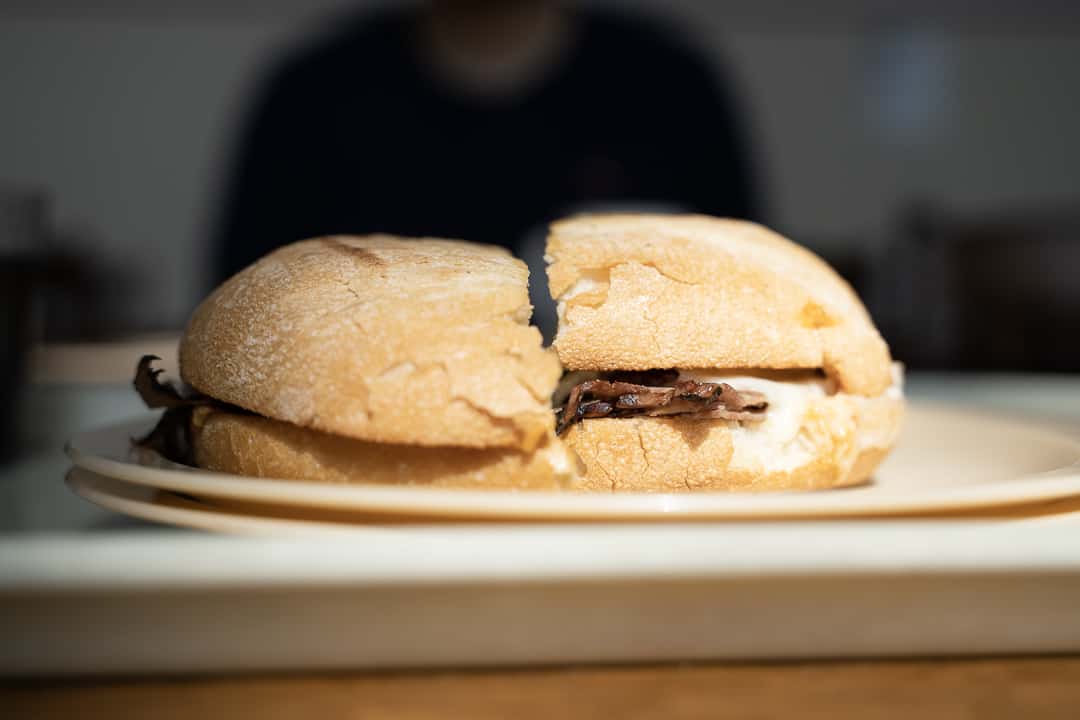Food is one of the most intimate ways to experience another culture. It is prepared by another person for you, to be consumed — no, subsumed — by you. Whereas “to consume” according to the Merriam-Webster dictionary is “to eat or drink especially in great quantity,” to subsume is to “encompass as a subordinate or component element.” Food becomes a part of you, a component element; it becomes a part of your body as it is stored in your cells and it becomes a part of your actions as you expend it through energy.
So, when coming across a new culture that we’re curious about, it makes sense to explore it through food first. But it’s not the contemporary cuisine that we are after — it’s the traditional, ‘authentic’ foods that we reach for first, looking back in time to understand the present. Maybe it’s because we feel that it’s more true to the culture, though this notion could, and should, be questioned. Maybe it’s because traditional food has history, generations of being passed down, refined, and adapted to local conditions and historical events. Maybe it’s because tradition offers comfort in our own cultures, and so it feels the most comfortable in other cultures. Regardless, when we seek out the food of another culture, it is often the tradition that we seek out first.
Yet, what if I told you that many of the “traditional” foods you consume are tailored to your taste as a cultural tourist? Consider ciabatta bread, a food created by Arnaldo Cavallari in 1982 to outcompete the imported French baguette. The names he licensed were “ciabatta polesana” and “ciabatta italiano,” both implying a deep connection to Italian culture through regional ties.
When looking at the relationship between tradition and food to capitalism, it is easy to see that tradition, particularly in terms of authenticity, is one of the finest weapons for marketing. Ciabatta is often marketed as “artisanal,” a word that has now essentially become an empty signifier, since it is clear that grocery chains are not “artisans.” But food is not the only place where we fall victim to this — the competition between tradition, modernity, and postmodernity rules all the cultural artifacts of our lives. Is our need to try out the true “cultural” foods of a region a product of marketing campaigns, or is it something that happens despite that?
In his 1931 essay “A Small History of Photography,” Walter Benjamin describes how old photographic elements such as blurriness and faulty lighting are surprisingly desirable. This is because technology had reached a point where it could replicate the flaws of past photography — a callback to a bygone era. In both photography and food, we feel the need to return to the comforting arms of tradition. Regardless of the impressive advances made in technology, the words “homemade,” “traditional,” and “handmade” continue to be used to signify warmth in a product: to signify home.
Ciabatta is interesting to me because it is an example of reproducing the “authenticity” of culture in food. When ciabatta is mass produced, it is often baked then frozen. Someone who is dogmatic about tradition may look at this fact and say that it is inauthentic to eat ciabatta pre-made in such a way. And yet, there is no such tradition for ciabatta — there is no history of eating it handmade and fresh. Within ten years of its creation, it was reproduced internationally — its tradition is the reproduction.
When discussing reproductions of images, Benjamin says that “the reproduction distinguishes itself unmistakably from the image… Singularity and permanence are so tightly bound up in the one as fleetingness and reproducibility are in the other.” In some ways, focusing on the reproduction contradicts the existence of the image. The act of “licensing” a food goes against the idea of it being ‘traditional.’ By the late 1980s, ciabatta was being mass produced in the UK and the US, even though it was allegedly emulating an image of authentic Italian cuisine.
If not authenticity, then what is our fixation on tradition really about? In his essay “In Praise of Shadows,” Jun’ichirō Tanizaki describes the difference between how silverware is seen in Japanese and Western culture, saying that Westerners “use silver and steel and nickel tableware, and [polish] it to a fine brilliance, but we object to the practice… On the contrary, we begin to enjoy it only when the lustre has worn off, when it has begun to take on a dark, smoky patina.” Perhaps our investment in “tradition” and real culture could also be what is blinding us from the enjoyment of traditional foods.
While travelling, we pursue authenticity and yet are drawn to things that shine and glitter. We let the shimmering marketing of cultural authenticity distract us from what truly reflects the culture of the region. In fact, what I found the most interesting in my research on ciabatta is the fact that Cavallari marketed this bread as traditional to Italians as well, saying that “My ciabatta is the taste of an old-fashioned bread. It reminds people of the older breads, the ones that were made with natural ingredients, no chemicals.”
In the face of economic pressure, tradition, authenticity, and culture become blurred. What we think is ‘traditional’ ends up being fraudulent, and authenticity is both valourized and questioned. It is difficult to know if we are truly experiencing another culture if we don’t know what forms the basis of that culture. Ciabatta is just one example of a phenomenon that we will only see grow — the expansion of ‘authenticity’ into the marketplace, creating a tension between the slow changes of tradition and the fast-paced nature of global economic systems.
To this, I offer only one solution: the next time you see an item marketed as authentic, think “Why do I want this?” Maybe then, we can start to challenge our ideas of how we can understand culture.


